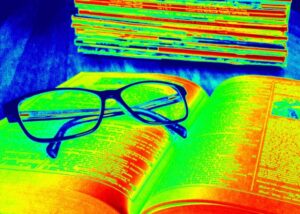
Resources Needed:
An Enemy of the People by Henrik Ibsen, adapted by Arthur Miller published by Longman Literature, 1993.
Warm-up – first class: Accessing prior information
- What is a whistleblower? – have students share their thoughts. Can they name one?
- Ask students if they’ve heard of Dr. Mona Hanna-Attisha? Discuss.
- Watch Splash clip:
- Ask students to listen and watch closely, make observations, and take notes about what they find interesting. Discuss.
Definitions
FROM Whistleblower – Wikipedia
For other uses, see Whistleblower (disambiguation).
“A whistleblower (also written as whistle-blower or whistle blower)[1] is a person, usually an employee, who exposes information or activity within a private, public, or government organization that is deemed illegal, illicit, unsafe, fraud, or abuse of taxpayer funds. Those who become whistleblowers can choose to bring information or allegations to surface either internally or externally…”
Reading Log Assignment – Read Act One, Scene 1, up to p.20 of An Enemy of the People by Henrik Ibsen, adapted by Arthur Miller
Students will post their reading logs on discussion board in Blackboard. They will reference the page number in a citation, for example, a passage on page 2 would be: (Ibsen and Miller 2).
They will put exact words in quotation marks.
In class, we look at the reading log questions on page xix. We go over and discuss each question. I encourage students to realize that they need to read more of (and for one question the whole play) to respond to a few questions and not to answer those questions until they’ve read more. I’ll choose the ones they can answer right away. They should make sure to not only state what they observed but to provide a brief analysis of it.
We will model by reading the first several pages of the play in class. Discuss the purpose of stage directions. Stage directions can be noted in the reading log. After we read the first few pages, we look at the list below of questions to answer. Students should choose 3 questions and add 3 responses for their reading log. They can mix up the questions and eventually try every item on the menu. Do this as a class to model. It could be a google doc.
Page 2 – Peter Stockmann is described in the stage directions as someone “whose life work is to stand in the center of the ship to keep it from overturning.” Think about what it means and put it in your own words.
_____________________________________________________________________________
_____________________________________________________________________________
Page 4 – Hovstad says about the doctor’s article that at the time he “would let it lie.” How is that a play on words, and what does it mean?
Ask students to pick 2 more to model together. And then pair students up giving each pair 2 questions (they can choose from the menu below) and have them present and write in chat a short summary of what they discuss, reminding them to cite the page number.
How do the authors use language? Is vocabulary complex or simple, or does it vary according to character and situation?
Draw maps, sketches, and doodles to help hold certain characters in your mind.
Do characters’ words or behavior seem especially important or memorable?
Are there any incidents in the plot you find significant, confusing, unconvincing, or unexpected?
What do you think will happen next in the play?
How does your response to certain characters develop or alter as you read? Why is this?
Students will continue their reading log for the entire play. They will be asked to respond to a peer’s post for each section of the play. We will share some posts and responses in each class.
Reading an Abstract
Read the abstract of Habibur Rahaman’s essay comparing Greta Thunberg with Dr. Stockmann.
What is an abstract? What is the purpose of it? What’s another definition of abstract? Read the essay with the class. Look at the Works Cited.
Abstract: An overview and summary of the essay, a condensed version. It helps when you’re choosing sources. It helps to define terms, organizations, people, concepts, etc. that might need to be looked up before reading the article to enhance comprehension.
An abstract summarizes, usually in one paragraph of 300 words or less, the major aspects of the entire paper in a prescribed sequence that includes: 1) the overall purpose of the study and the research problem(s) you investigated; 2) the basic design of the study; 3) major findings or trends found as a result of your …
How do you cite a play MLA in MLA? MLA Style Guide – https://www.scribbr.com/mla/how-to-cite-a-play/
Be sure to provide citations for quotes and paraphrases.


Leave a Reply